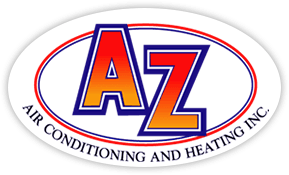We all like saving money on our monthly utility bills, but it turns out there’s a way to do it when you aren’t even home.
It starts with your thermostat. By making the most out of your thermostat, you can tailor the temperature to your needs. This means establishing various temperature settings for when you’re at home, away or even when you’re sleeping.
With a few simple adjustments, you have more time to enjoy pleasant temperatures while also keeping more of your money. Here are some ways your thermostat can save you money in the summer:
While at Home
Whenever you’re at home, you want comfortable temperatures. It’s only natural to want your thermostat lower in the summer while inside to make the most of the cool air.
But the most energy-efficient temperatures for the summer is actually around 78 and 80 degrees Fahrenheit. This way, you’ll avoid the worst of summer while keeping your energy bill more manageable.
While Gone
When it comes to setting the temperature for a vacation or other trip away from the house, it’s advantageous to set the thermostat higher for while they’re gone.
If your home is located somewhere a little cooler, you can set the temperature as high as 88 degrees while no one is home before lowering it back to the sweet spot of 78-80 degrees once you’re home again. This way, your air conditioning won’t have to work constantly to keep an empty house cool.
While Asleep
When it comes to sleeping in the summer, you want your thermostat set at a comfortable temperature. A good rule of thumb is between 68-72 degrees Fahrenheit. This will keep you from getting too hot or too cold when you are trying to get some rest.
Other Ways to Use Less Energy:
- Install a smart thermostat: Using a smart thermostat in the summer helps save money on energy costs as it forms temperature schedules according to your lifestyle and home environment. A smart thermostat manages the temperature if you are home or sleeping, while allowing it to get a little warmer when no one is around. Using reputed brands and models such as the Lennox iComfort, you are able to adjust settings and schedules through your smartphone, tablet or laptop. Planning smart thermostat installation in your Los Angeles home can be the simplest strategy for maintaining comfortable, yet energy-efficient temperatures even when you aren’t home.
- Upgrade your HVAC system: A new HVAC system can save money in the long run. If a system boasts high energy efficiency, you can also count on lower utility bills since more efficient equipment requires less energy to heat and cool your home. Air conditioning installation in Los Angeles is only a phone call away, so don’t hesitate to reach out to local pros like AZ Air Conditioning and Heating who can set you up for success.
- Schedule annual AC maintenance: Whether or not you keep up with regular air conditioning maintenance in Los Angeles can have a big impact on your monthly energy use. With regular cleaning of the coils, checking for damage and keeping vents clear of dust and debris, this can help your HVAC system run more efficiently. Increasing efficiency also limits strain on key parts and lowers operational costs, leading to lower energy usage, which translates into lower energy bills.
- Clean or replace the air filter on a regular basis: A regular schedule for cleaning or replacing the HVAC system’s air filter saves money by keeping airflow as smooth and consistent as possible. When filters are clogged with dirt and debris, air conditioners have to work harder, and the strain can reduce the system’s life span and result in breakdowns.
- Check your attic insulation: Insulation is a crucial component for any energy-efficient home, securing the hot air outside and the cool air inside through summer. The North American Insulation Manufacturers Association (NAIMA) offers an official recommendation stating homeowners in souther states should have at least 13-14 inches of insulation, while those in northern U.S. states should have 16-18 inches.
- Review your ventilation: A leak in the air ducts could increase your energy bills much more than 20 percent, plus it can potentially allow harmful emissions from your water heater, clothes dryer and other appliances to get into the atmosphere of your home. Checking your ductwork for leaks and sealing them can address both concerns.
- Seal all other leaky spots in your home: Sealing up other leaks in your home with caulk, foam sealant or weather-stripping keeps temperatures a little cooler on hot summer days. You should also check for any gaps around windows, doors and even outdoor fixtures. Devoting time and effort to sealing leaks now can help you save a lot in the long run.
